There are high hopes for the Hyundai Ioniq 5. It’s the South Korean carmaker’s first bespoke electric vehicle, kicking off a dedicated line-up with a unique retro-futuristic looking medium crossover.
But can it compete against the popular Tesla Model Y and vye with its related, sportier-looking Kia EV6 counterpart?
It’s worth noting the Hyundai Ioniq 5 model line-up has now been revised for the 2023 model-year and the 2022 launch model (tested here) is no longer on sale.
Despite this, a few used launch examples are flowing onto the used classifieds, albeit at inflated prices. So, is it still worth a look over the newer iterations in today’s supply-constrained market?
The 2022 Hyundai Ioniq 5 launch model is separated by two model variants – single-motor two-wheel drive (2WD) or dual-motor all-wheel drive (AWD) powertrains – both of which have a single large battery pack in Australia.
We tested two top-spec Ioniq 5 AWD launch examples starting from $75,900 before on-road costs when it was new. Both are pictured in this review: Atlas White exterior with an Obsidian Black interior (no cost extra) and Galactic Grey exterior with a Dove Grey/Dark Teal interior (no cost extra).
It launched in September 2021 as a 2022 model-year, which was then revised in July 2022 with a de-specified Dynamiq RWD and a flagship Techniq AWD boasting some added equipment. Today, the equivalent 2023 Ioniq 5 is a mid-range Techniq AWD priced from $79,500 before on-road costs.
For full pricing, specifications and features of the updated 2023 Ioniq 5, click here.
zecar rating
Good points
- Avant-garde design
- More practical, cheaper than Kia EV6
- It’s set a cultural icon for EVs
Could be better
- Weak LED headlights
- Soft suspension tune
- Charging issue encountered in our tester
EDITOR’S NOTE: Two test examples were provided by Hyundai Australia for a total of 13 days for an independent evaluation. This is the 2022 launch model and is no longer sold.
Design

The Hyundai Ioniq 5 is heavily based on the 45 EV Concept revealed in 2019. It looks like no other car and deserves to be called 'avant-garde'.
Outside, the blocky pixel LED head- and tail lights are reminiscent of eight-bit Pac-Man eyes, there’s hidden moustache lights along the front visor, and the thin full-width rear LED light bar strip accentuates the rear visor.
The 20-inch alloy wheels are in an intricate woven flower pattern aerodynamic design, the satin silver cladding has camera shutter-like slits around the wheel arches, and horizontal lines on the side and rear reflectors are inspired by the Hyundai Pony sedan from the ‘70s.
These design elements all make the Ioniq 5 'cute'. But at 4635mm long, 1890mm wide and with only 160mm of ground clearance, it's certainly a big, porky car too – and not a SUV.
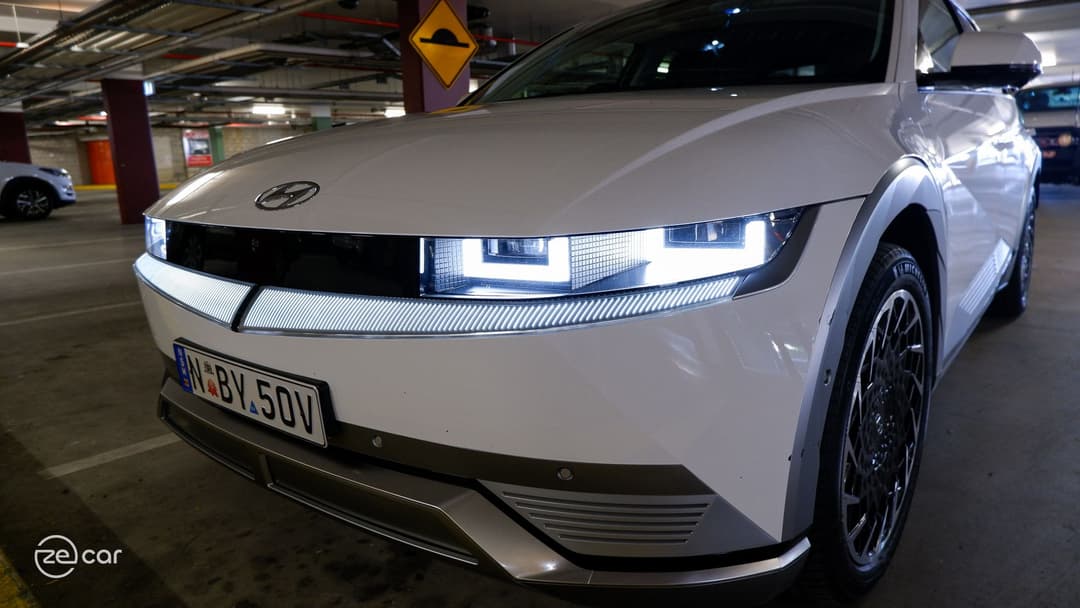
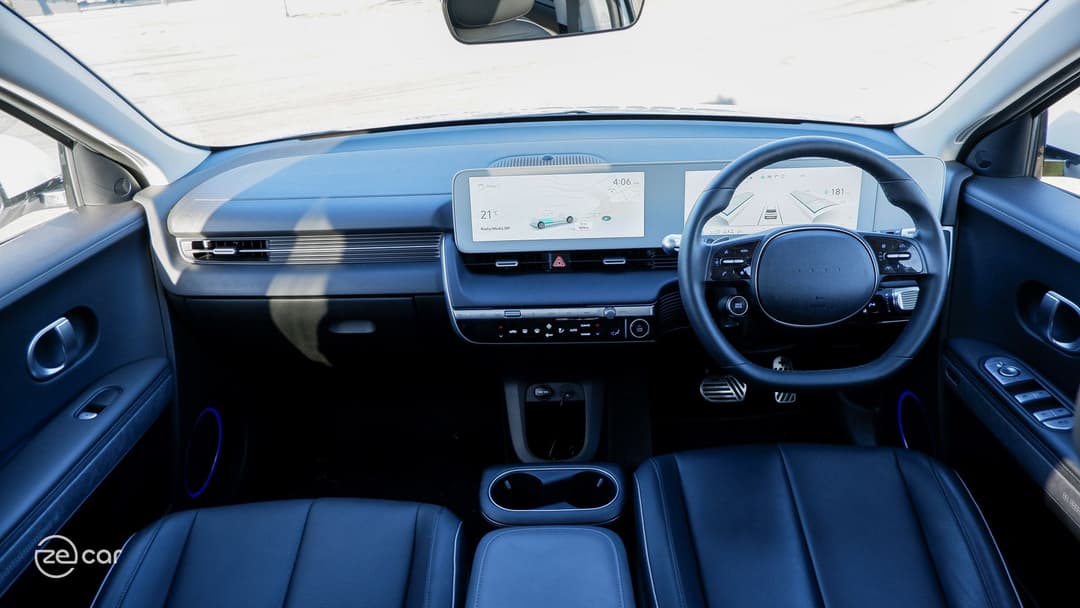
Our first tester painted in Obsidian White with an Obsidian Black interior also isn't as striking compared to the Galactic Grey with Dark Teal/Dove Grey interior. The latter lifts up the cabin with its white seats, red piping and stitching, and a deep green dashboard and upper door cards. Unfortunately, the interior colour can't be optioned separately; it is tied to the exterior colour buyers choose.
Inside, the Ioniq 5’s cabin strikes a good balance between being contemporary and unique, but not too space-age like the Tesla Model Y nor as its exterior suggests.
I applaud Hyundai's attention to details which makes it feel more special than the Kia EV6. It continues the motifs inside with pixel squares on the steering wheel, recycled paperette on the door cards and even embossed on the backrest of the front seats, while horizontal line patterns are deployed across its speaker grilles, storage surfaces and other places where you'd usually expect a blank plastic trim.

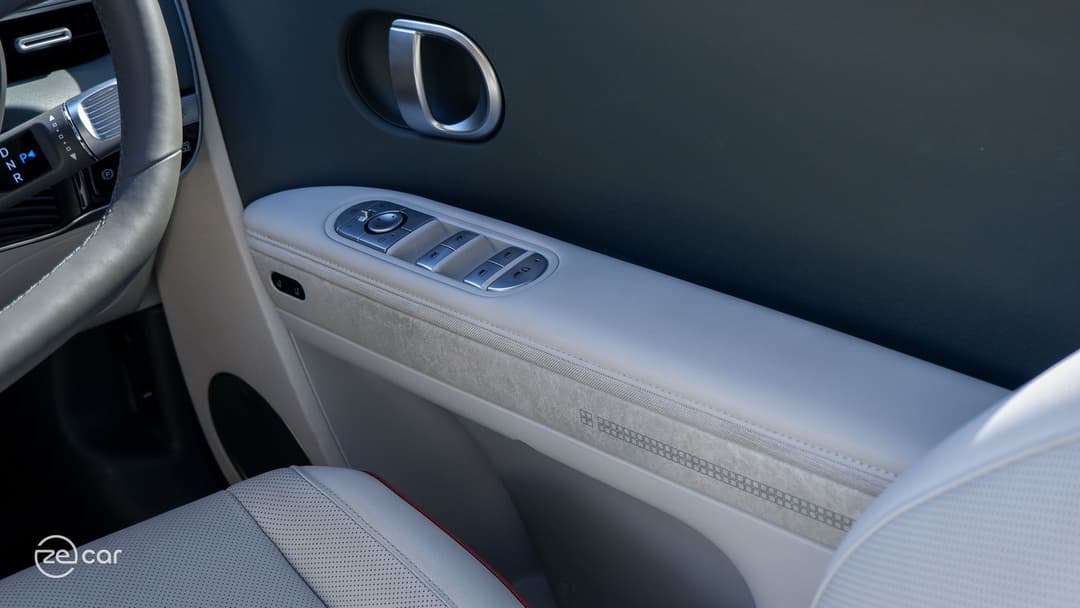
Regardless of which interior style, the touchscreen and adjoining driver's cluster use white display bezels. While it is sizable and may be controversial, it's fitting for its retro design and is akin to the 2021 Apple iMac.
However, the paperette material was starting to peel in our first tester that has clocked more than 10,000km on the odometer and almost one-year of use on the press fleet. And although there’s 64-colour ambient lighting, it’s not as obvious being only beside the door armrests and circular Bose speaker grille surrounds.
The overall interior quality is good for its price tag and solid nonetheless. Gloss black surfaces are minimal, besides the touch sensitive HVAC panel and less tactile steering wheel buttons.
Practicality
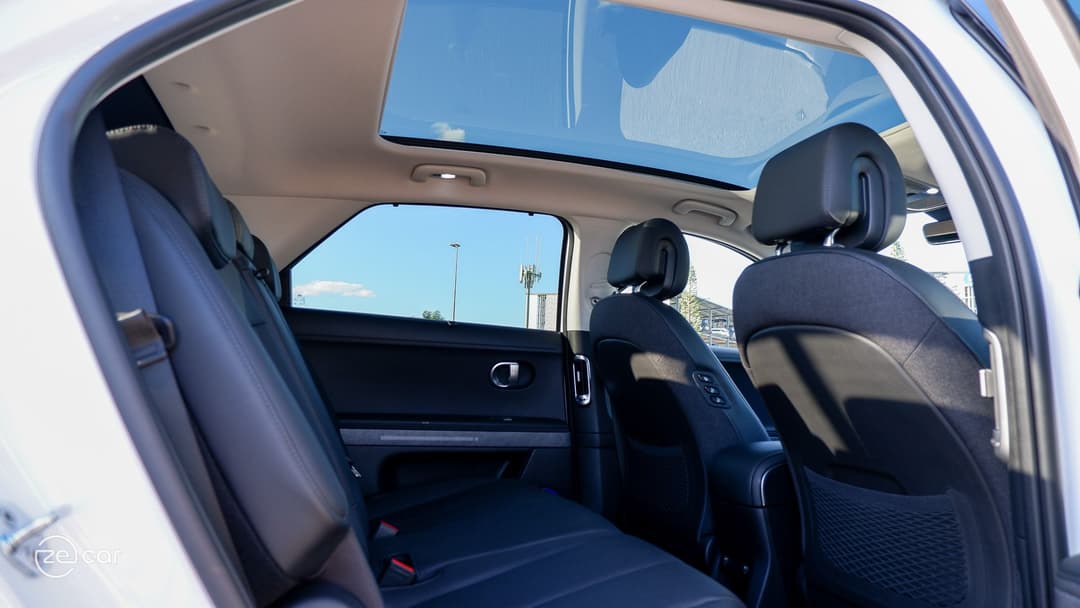
The Ioniq 5 has 560-litres of boot space or 1620-litres when the rear seats are folded down in a 60/40 split. Thanks to a slightly less sloping rear, it is 70-litres and 320-litres more than the Kia EV6 respectively.
Disappointingly, the Ioniq 5 lacks the remote fold-down seat toggles in the boot as found in the EV6 (you’ll need to pull the lever on each side of the seats). It also doesn’t offer any bag hooks, so most items need to be secured under the included luggage net.
There's also small underfloor storage to store the included home trickle charging cable and tyre inflation kit, though it's compromised by hardware for the Bose speaker system.


Under the large front clamshell bonnet is a small 25-litre frunk, which is less usable than the 2WD due to the front electric motor in this AWD flagship.
Rear row space is plentiful. Thanks to the dedicated Hyundai Electric Global Modular Platform (E-GMP), it enables a long 3000mm wheelbase – typically found in large SUVs – for capacious leg space and good head space even with the panoramic glass roof in place. That's 100mm more than the EV6 for context.
Like many other electric cars, the battery underneath the floor elevates passenger’s knees higher when seated upright, but there’s room underneath the front seats to stretch your feet under.

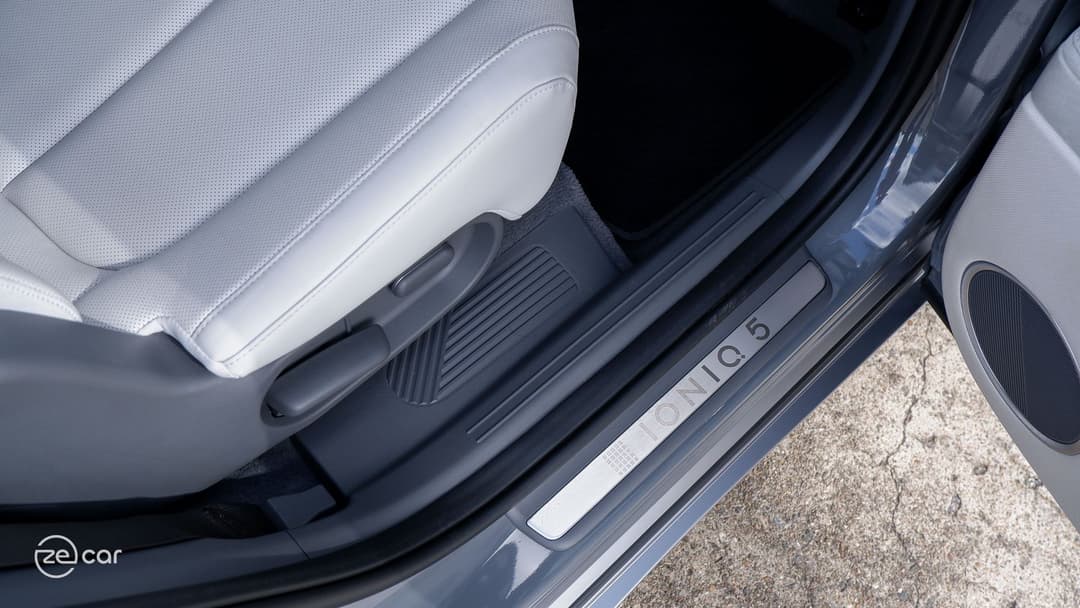
Thankfully, the fixed glass roof has an electrically retracting sunshade and the rear air vents are higher up on the B-pillar to keep cool and sun safe. The two ISOFIX child seat anchorage points are tucked inside the rear outboard seats.
The Ioniq 5 medium crossover suits families more than the Kia EV6 GT-Line we tested by incorporating a light-coloured headliner, sunshade blinds for the rear two tinted windows, heated and electrically sliding rear row, plus a three-memory seat configuration system for all pews controlled via the touchscreen (not just the driver).
But, I did notice that the side sills can feel quite sharp on the legs when it comes to ingress and egress.
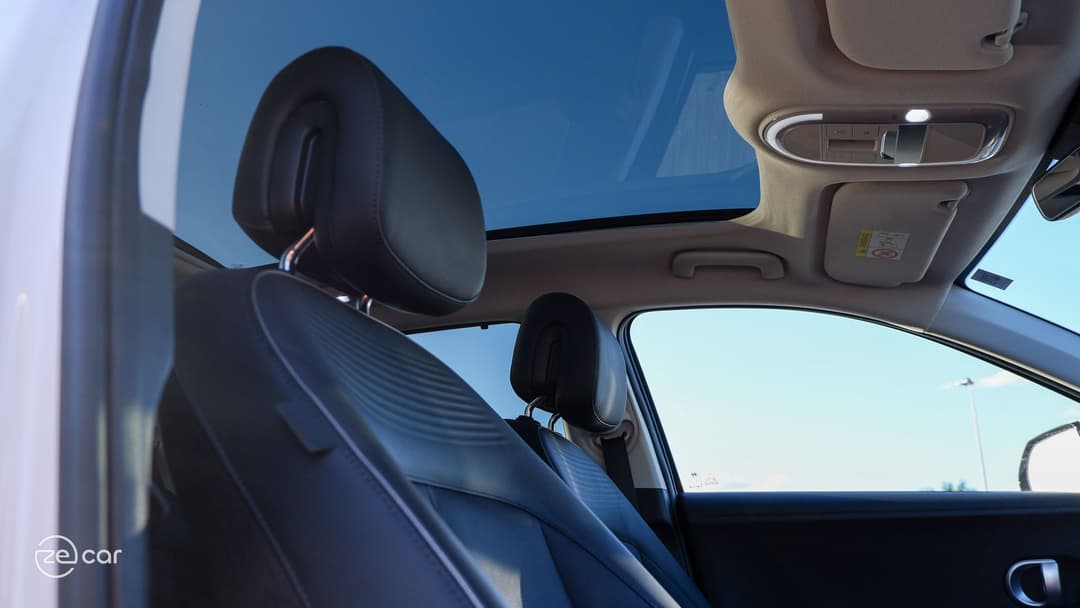
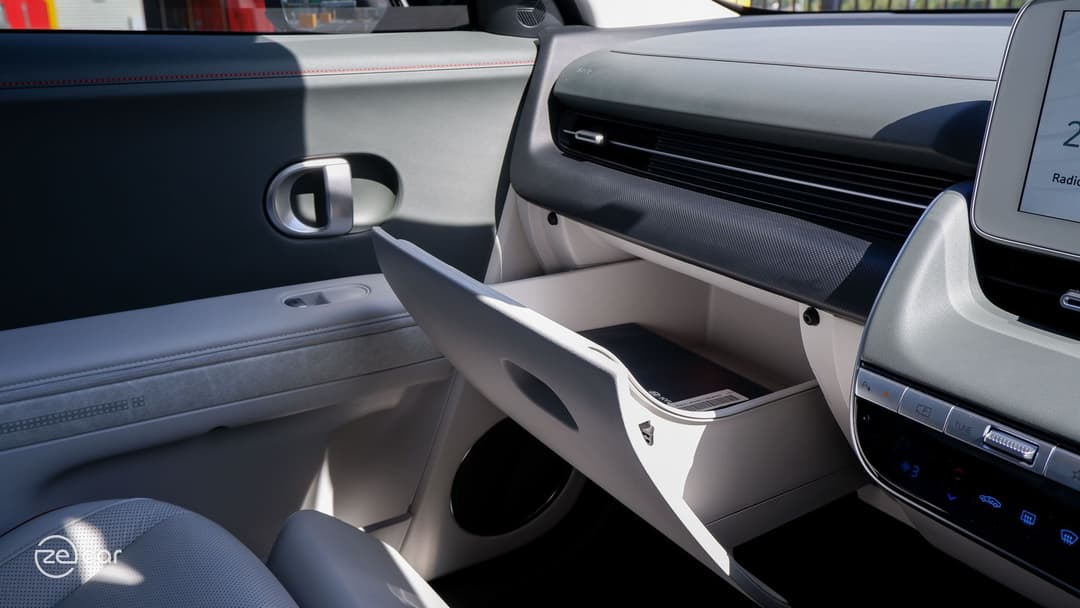
Up front, the nifty slide-out glovebox drawer can store 9.4-litres, there’s a magnetic pad for the driver (which seems to be only useful for putting magnets or MagSafe wallets), and the centre console can manually slide back and forth to yield a more open floor space.
There’s a shallow space within the centre armrest, which can be folded up to put larger or taller items underneath in the centre console island like handbags or takeaway. Though, the bottle holders on the doors aren’t carpeted like the Kia EV6 so they can rattle while driving.
The front two seats are treated to a leg rest extension which is a smart feature and works a treat when in its reclined relaxation mode.
Technology

All Hyundai Ioniq 5s feature dual 12.3-inch infotainment and driver’s instrument displays joined together on a thin panel.
It runs on South Korean giant’s own operating system with built-in maps, performs fairly well, and the display looks clear.
The light mode suits the retro white-bezels during the day, but can be glaringly bright at night. We’d like to see an auto-switching white and black theme as found on the newer Genesis GV60, instead of having to dive into the settings every time.
Most of the time driver’s will use wired Apple CarPlay and wired Android Auto, hooked up via the USB-A port at the front. The latter still wasn’t fullscreen on our tester, though we believe a software update is being deployed to enable it across all Hyundai Motor Group vehicles.
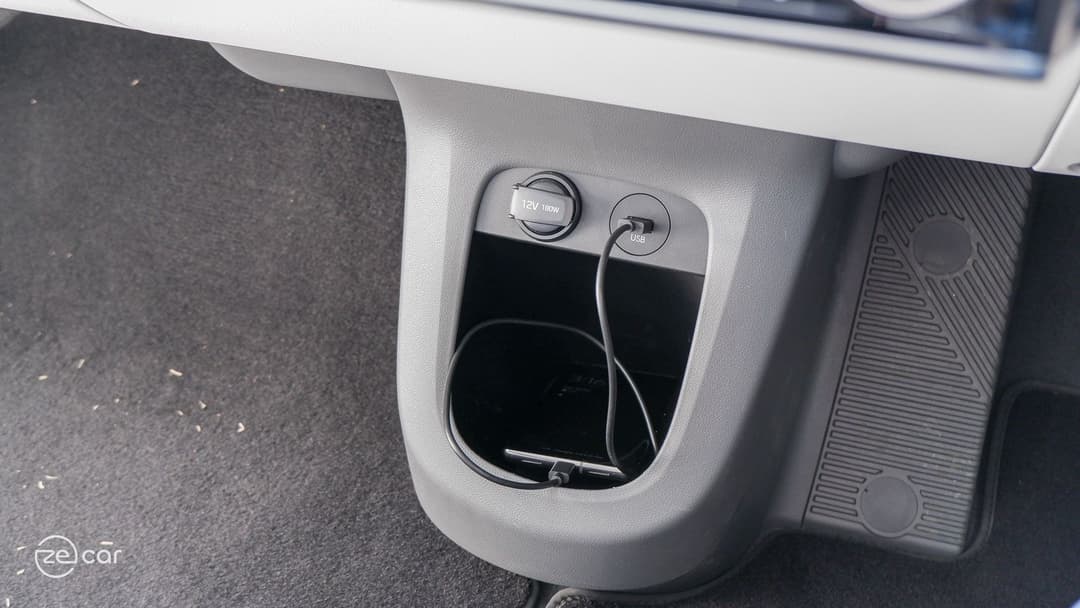

There’s only USB-A ports across the cabin, which is disappointing given the related and pricier Genesis GV60 has moved all connectors to the more modern USB-C standard.
It’s also a shame that there’s no wireless smartphone projection, especially when the front cubby for connecting and storing the smartphone is hard to reach and awkward, as opposed to the conveniently placed 15-watt fast Qi wireless charging pad on the sliding centre console.
Underneath the infotainment system is a row of physical shortcut buttons, including an ergonomic volume dial and tune switch which is commendable.
However, Ioniq 5 incorporates a touch sensitive gloss black panel for controlling the HVAC. Although basic controls like the dual-zone temperature, fan speed and demisters can be operated directly, toggling the front two heated and ventilated seats must be through a dedicated app within the touchscreen by hitting the ‘warmer’ button. This is annoying as it completely gets rid of the screen you were on like the map or smartphone mirroring, even though you can quickly return back.
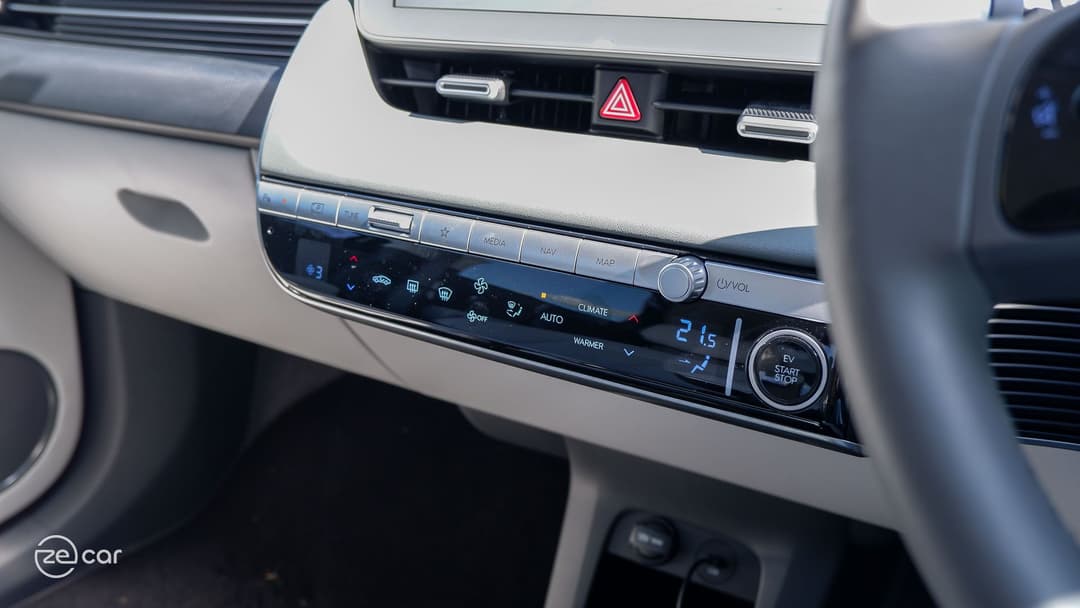
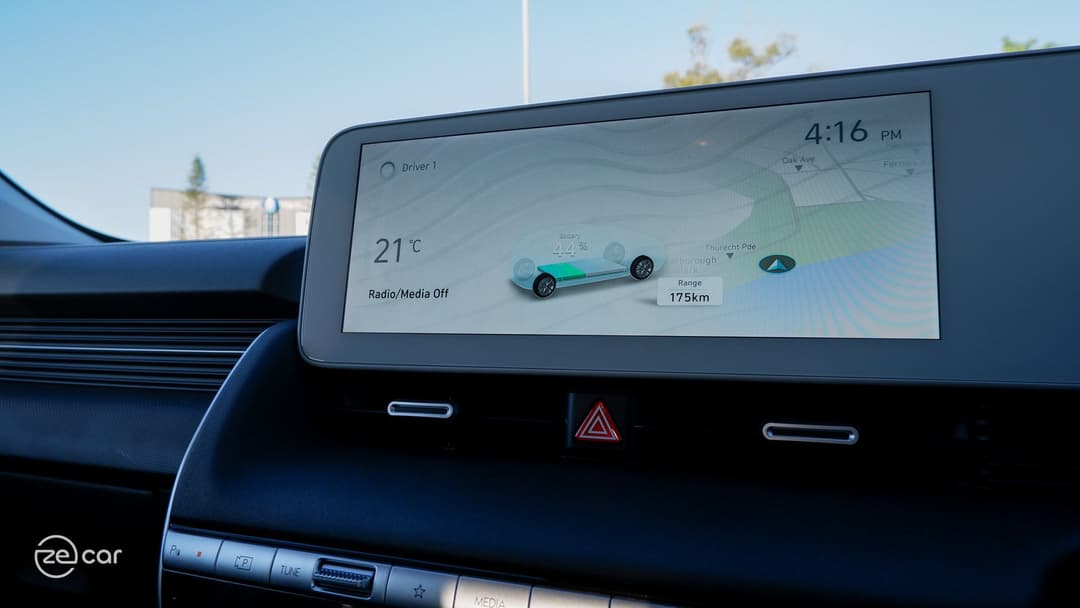
Furthermore, the 12.3-inch digital driver’s screen is legible, but isn’t as customisable compared to the Hyundai Kona Electric and Kia Niro EV we’ve tested. Unlike those cheaper electric SUVs, the Ioniq 5 clearly displays the state of charge as a number.
This 2022 launch model also doesn’t get a head-up display, but the later update added it in as standard.
The medium crossover boasts an eight-speaker Bose sound system, which sounds adequate.
Safety assist
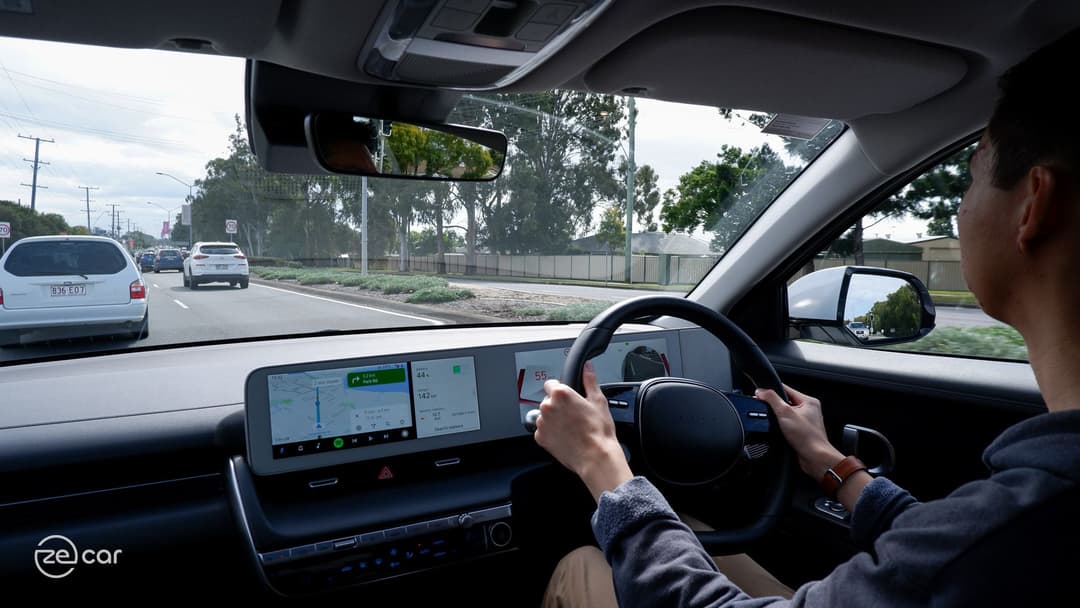
All Ioniq 5 models come with a raft of active safety assistance systems, including auto emergency braking (AEB) with car/pedestrian/cyclist/junction turning/lane change oncoming and side detection, blind spot and rear cross-traffic avoidance assist, stop/go smart cruise control, lane following and keeping assist.
There’s also a 360-degree camera, blind spot view cameras, front and rear parking sensors, lead vehicle departure alert, safe exit assist and rear occupant alert as standard.
The adaptive cruise control works well with lane centring assist, but can be slow to react at times and can’t detect vehicles in front when turning around a slight corner or over a crest.
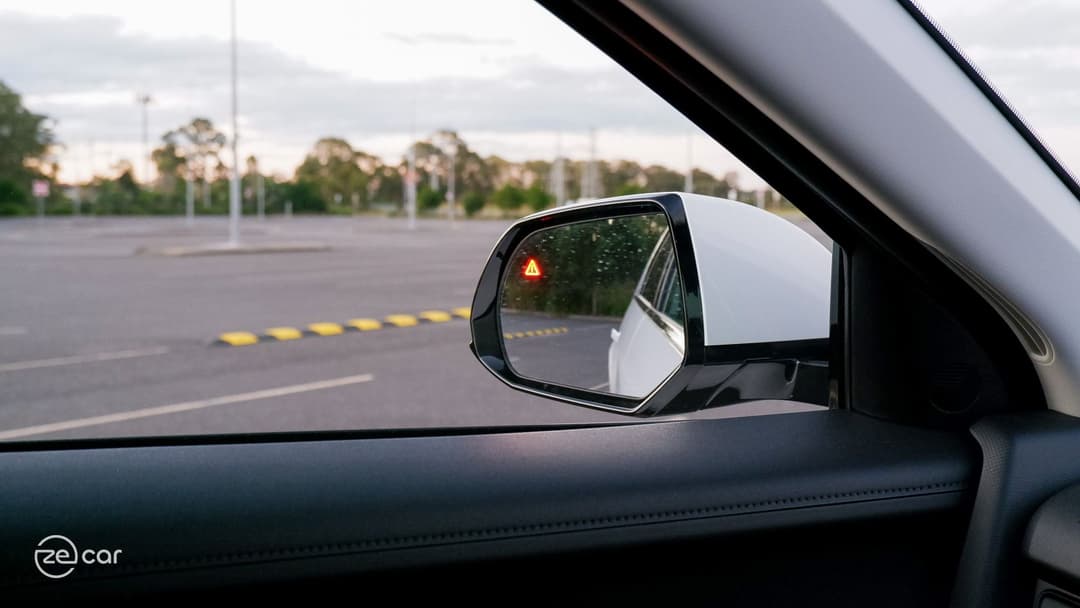
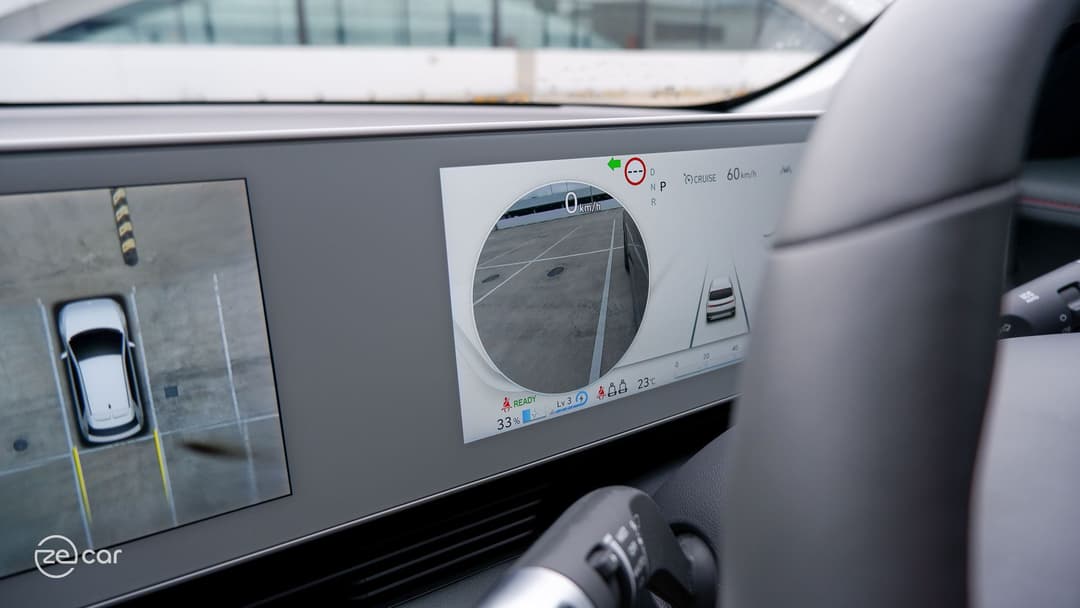
The 360-degree surround view camera system is clear and comes in especially handy while parking its wide footprint and cautiously looking at the front wheels view to avoid curbing the pretty, but large 20-inch rims.
The blind spot view cameras also show in the instrument cluster when the respective indicators are on, though I was still mostly used to looking over the shoulder and wing mirrors anyway.
Unfortunately, while the pixel LED headlights are attractive, they don’t perform well at night with sub-par spread and reach. I’d posit this is because of the narrow light housing needed to fit within the front visor.
The high beam doesn’t contribute much either and there isn’t any adaptive functionality (only auto high beam).
Range and charging
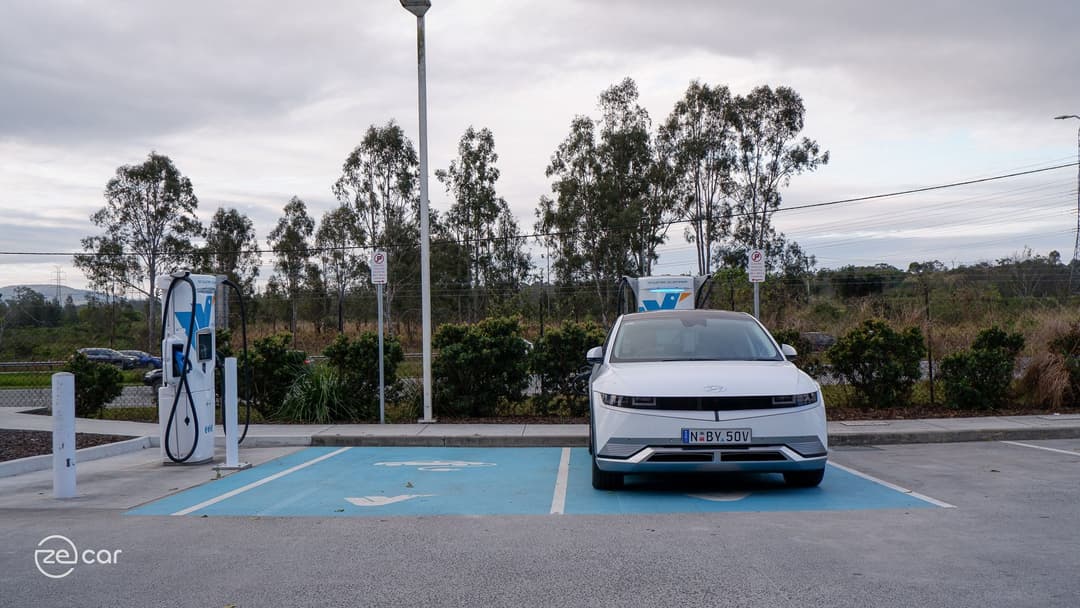
The 2022 model-year Ioniq 5s all house a 72.6kWh battery pack underneath the bespoke electric car’s platform floor and is officially rated to charge at up to 10.5kW AC and 350kW DC using an 800-volt class architecture.
In our test with a 350kW ultra rapid EV charger, the Ioniq 5 juiced-up from 15 to 80 per cent in around 17 minutes.
It impressively kept a strong charge rate thanks to the high voltage – peaking at 222kW at the 9 minute mark with more than 50 per cent of the battery already filled, before gradually throttling down from around 60 per cent state-of-charge. Despite this, it still maintained a fast 120kWs at 80 per cent.
The Ioniq 5s ultra rapid charging results are most handy for stops while on road trips, though most public DC charging stations in Australia are still limited to 50kW especially in metro areas. The 800-volt class architecture does mean that it’ll sustain that max charge rate for longer, though.
Meanwhile, the 10.5kW AC onboard charger is a standard affair for electric cars nowadays. Interestingly, contrary to the official rating, I did manage to achieve a maximum AC charging rate of 11.3kW.
The Type 2/CCS2 charging port is located on the rear-right side of the vehicle. We found it to be more accessible for chargers than the Kia EV6 that is awkwardly on the right of the tailgate and the lid opens up on the side instead.
There’s no active battery preconditioning functionality, but is offered on the updated top-spec 2023 Ioniq 5 Epiq and more luxurious Genesis GV60 line-up.
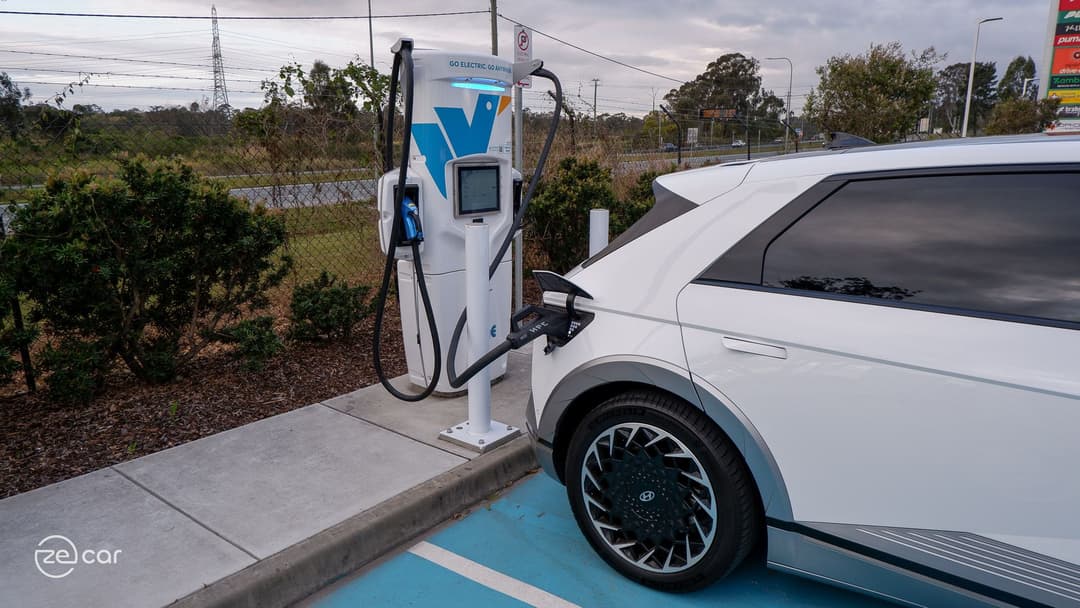
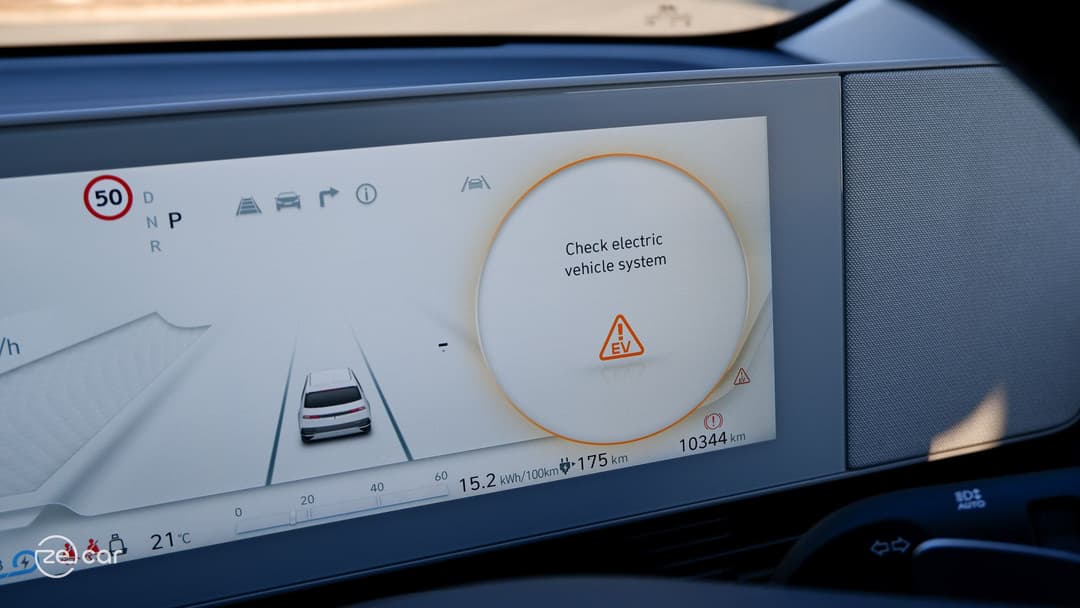
Disappointingly, we did encounter a charging issue with our first tester example.
After putting it on a Tritium-made ultra rapid public charger operated by Evie Networks, it unusually throttled its DC rate dramatically and stopped itself at 60 per cent.
It then displayed a vague ‘check electric vehicle system’ warning message and refused to accept charging further from a DC station even after it was rested for a couple of days. It did charge 6 per cent from a standard home AC socket before, again, refusing further charging.
Hyundai Australia told zecar that its safety switch was tripped to protect itself from damage while charging, with the technician suspecting it was an issue with the charger equipment itself.
I contacted Evie Networks and they had a Tritium technician check the stall it was used on (when repairing the other faulty unit), but could not identify an issue. The charging provider also hasn’t had any other reported vehicles experience the same issue.
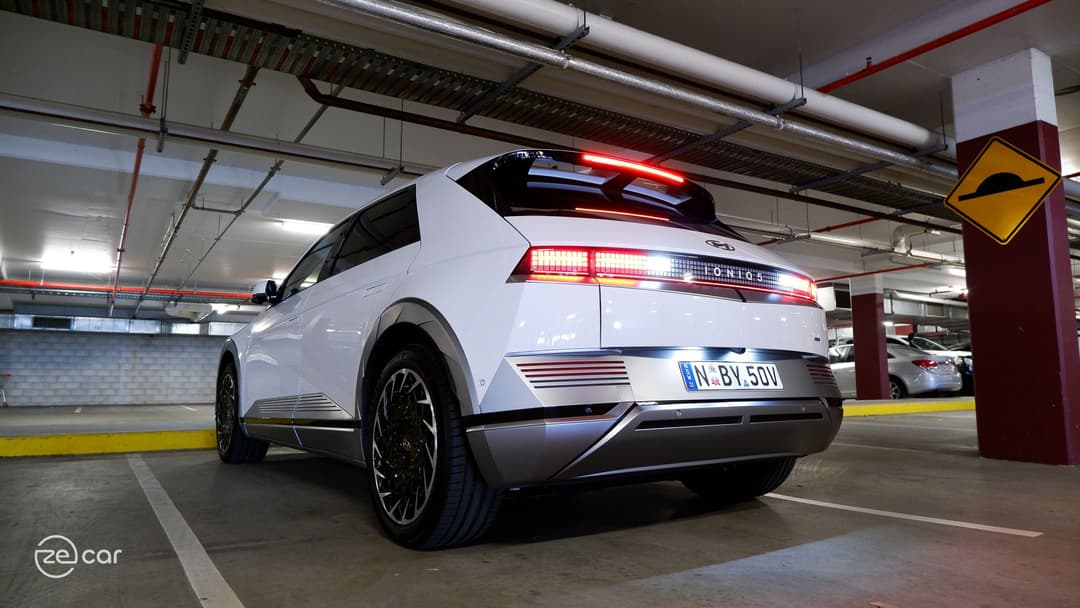
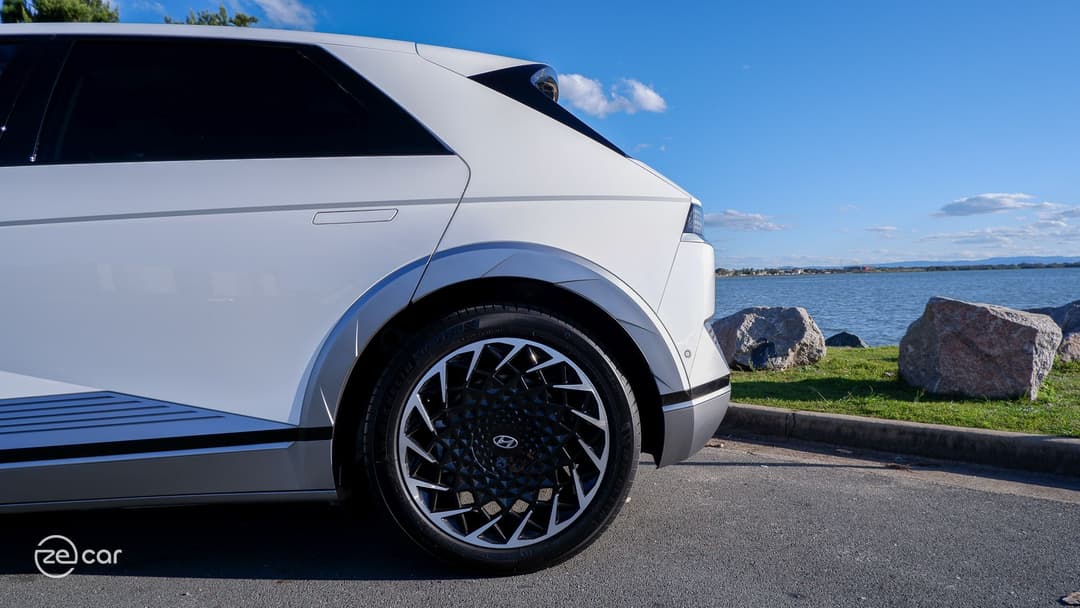
It’s worth noting that the Ioniq 5 tester (pictured in Atlas White) is an early production unit when it first launched locally in late 2021. We didn’t encounter any charging problems on our second tester (pictured in Galactic Grey).
Hyundai says this dual-motor AWD version has up to 430km of range (WLTP) from a full charge.
In our week, I surprisingly achieved more than the claim: 451km real-world range from a 161Wh/km energy consumption figure with a mix of urban and highway driving and a slightly lighter foot.

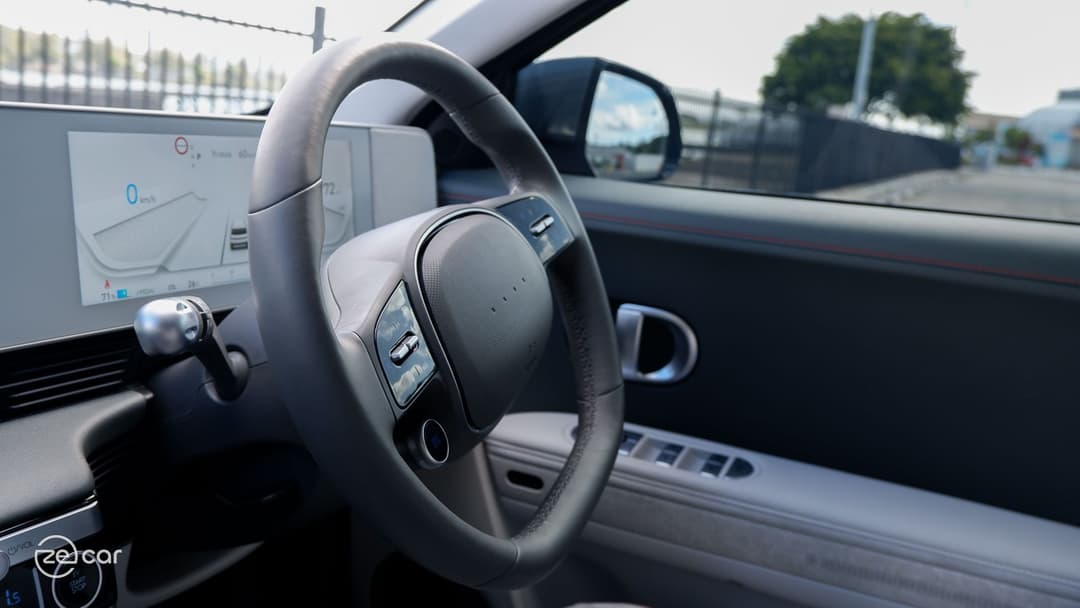
These are commendable figures given the Ioniq 5’s heavy 2100kg unladen weight, average 0.29 drag coefficient, and dual-motor AWD setup.
Its efficiency is in line with the smaller second-generation Kia Niro EV, but even more efficient and longer real-world range than the related Kia EV6 GT-Line AWD with a bigger battery in our review, though admittedly I was driving more zealously with it.
All Ioniq 5 models are capable of vehicle-to-load (V2L) and come with an included Type 2 bidirectional charging adapter to power almost any device outside.
Though, the more handy interior V2L plug is only on the updated 2022 and 2023 model-year variants.
Driving
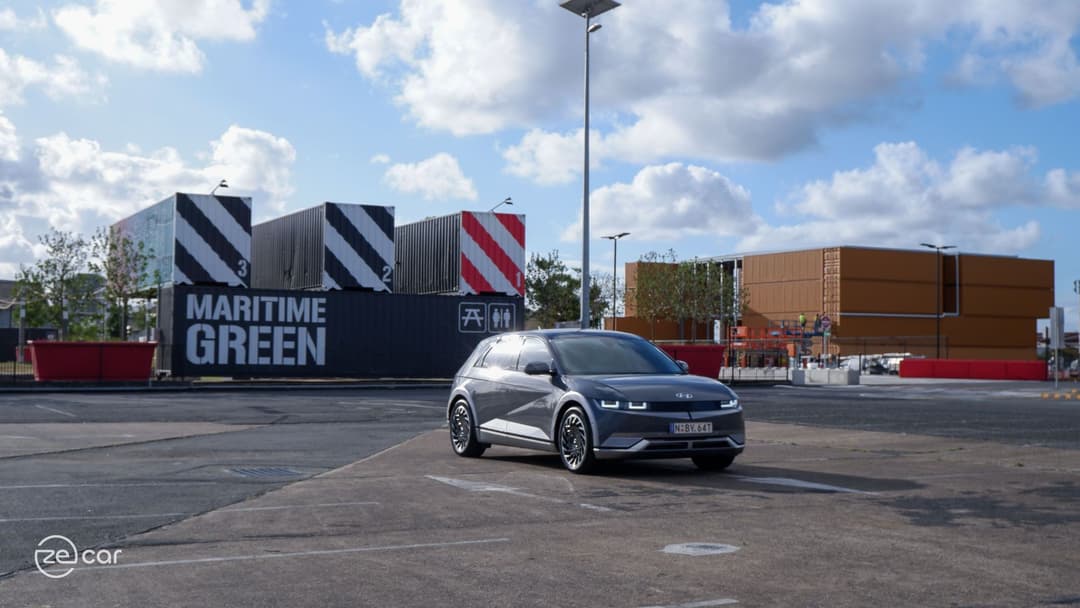
The 2022 Hyundai Ioniq 5 AWD has two electric motors producing a combined 225kW of power and 605Nm of torque, which can accelerate from 0-100km/h in a claimed 5.2 seconds.
On paper, this is nearly identical to the Kia EV6 GT-Line AWD, though it has a slight upper hand with 14kW more power.
On the road, the Ioniq 5 performs well with more than enough power for daily commutes, although it doesn’t feel as sharp as the EV6 to drive around corners.
But, it’s let down its softer suspension setup. While it is adept in urban and suburban driving over speed bumps and coarse chip surfaces, driving on the M1 southbound towards the Gold Coast – where the cement is full of endless undulations – feels uncomfortable.

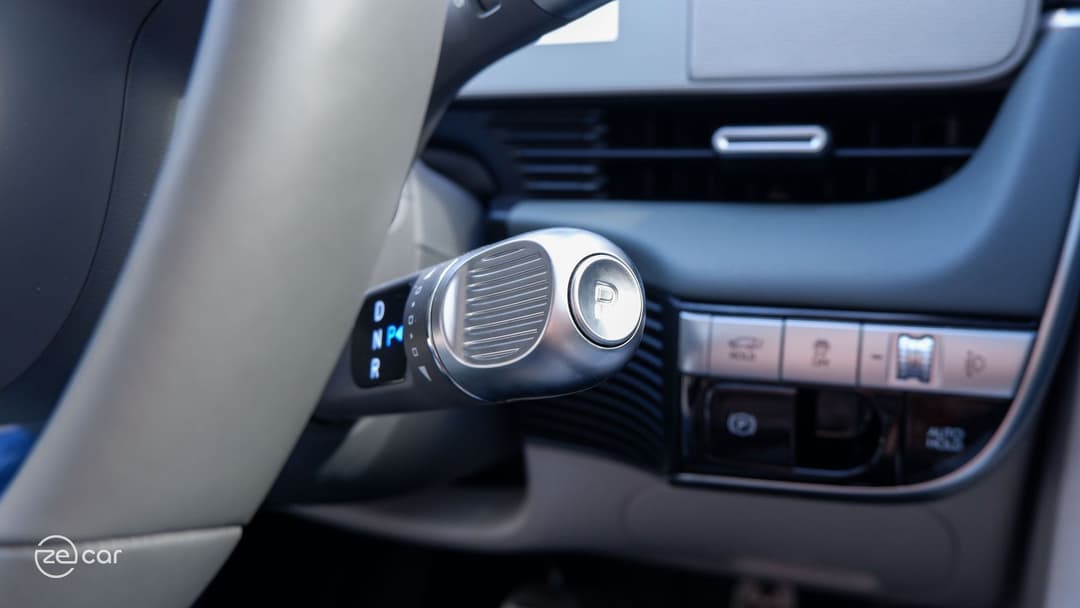
The medium crossover reverberates each bump into the cabin, the front ride is unsettling and relatively noisy, especially when driving at 110km/h.
With the 2023 Ioniq 5 update bringing a revised ride and handling package, we hope this has been addressed.
Moreover, its large dimensions spanning 4635mm long and 1890mm wide with an 11.98-metre turning circle can be tricky to navigate tight streets and car parks at times. Thankfully, the clear 360-degree camera somewhat relieves the stress.
The Ioniq 5 also debuts a new separate drive selector stalk mounted on the right of the steering wheel, instead of an integrated one as per Tesla and Mercedes-Benz vehicles.
But, longer legged drivers may find it obtrusive and even with nearly two weeks with the electric car, I still needed to look down to see the column.
One time, I accidentally switched into neutral while driving when I was flicking the indicator column above.

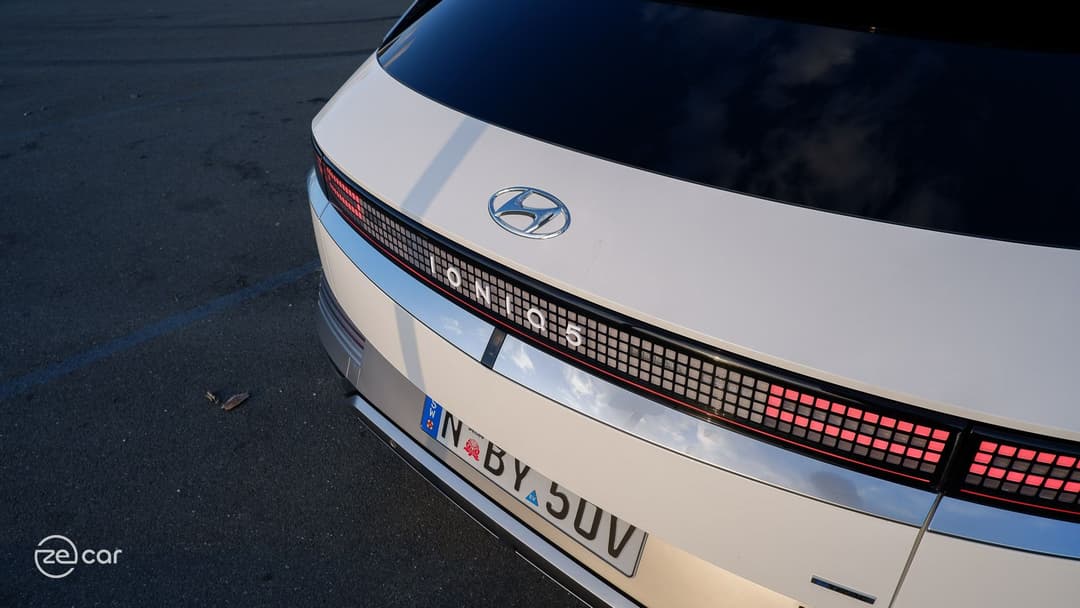
The bespoke South Korean EV has three levels of regenerative braking settings, in manual or adaptive modes, and ‘i-Pedal’ for one pedal driving toggled using the paddle shifters on the steering wheel.
In my week, the strongest i-Pedal was relatively easy to acclimatise to and is smooth to operate. Unfortunately, like all new Hyundai Motor Group electric cars, it doesn’t hold the rear brake lights on when stationary and I’d also like to see the threshold to activate the brake lights to come on earlier while recuperating.
Similarly annoying, the regen setting defaults to level three every time the car is turned on or when switching the drive selector.
The Ioniq 5 is backed by Hyundai’s five-year, unlimited kilometre vehicle warranty and eight-year/160,000km battery warranty.
Despite requiring more frequent service visits every 12 months/15,000km, compared to the latest 2023 model’s 24 months/30,000km, it is surprisingly cheaper to maintain overall.
Verdict

Overall Rating
8.2 out of 10
💰Value for money: 8.5
📱Tech and safety: 8.0
📏Size and practicality: 8.5
⏱️Driving and performance: 7.0
🔌Range and charging: 9.0
🛠️Warranty and running costs: 8.0
The Hyundai Ioniq 5 is a better suited electric family car than the Kia EV6.
It has a more thoughtful interior, avant-garde design and we surprisingly achieved better than Hyundai’s range and efficiency claims. Though, the uncomfortable soft suspension is a sore point – especially when you travel out of the city on poorly maintained roads and drive at high speeds.
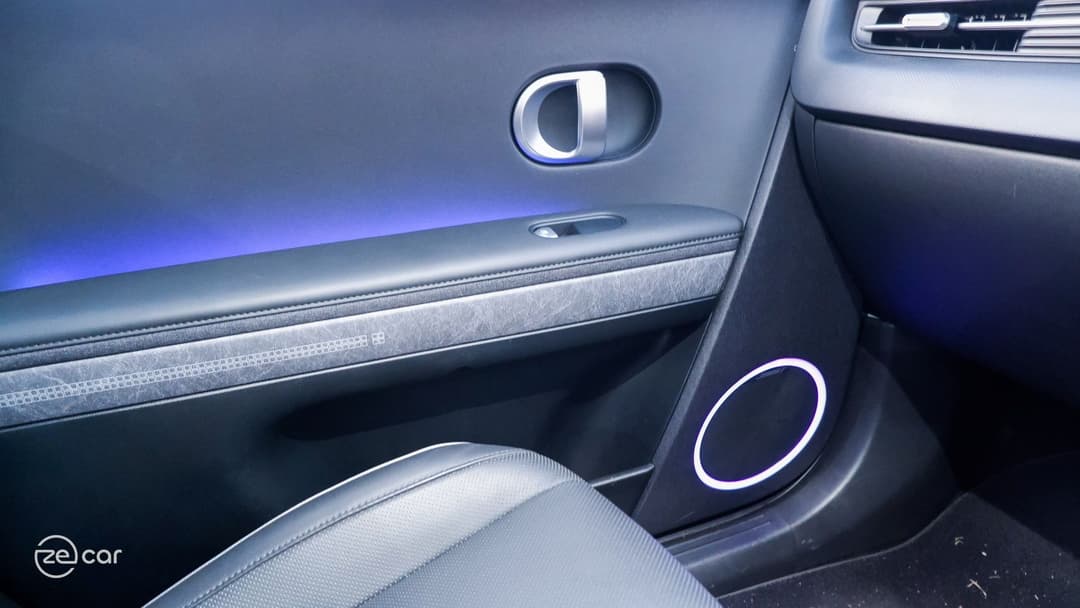
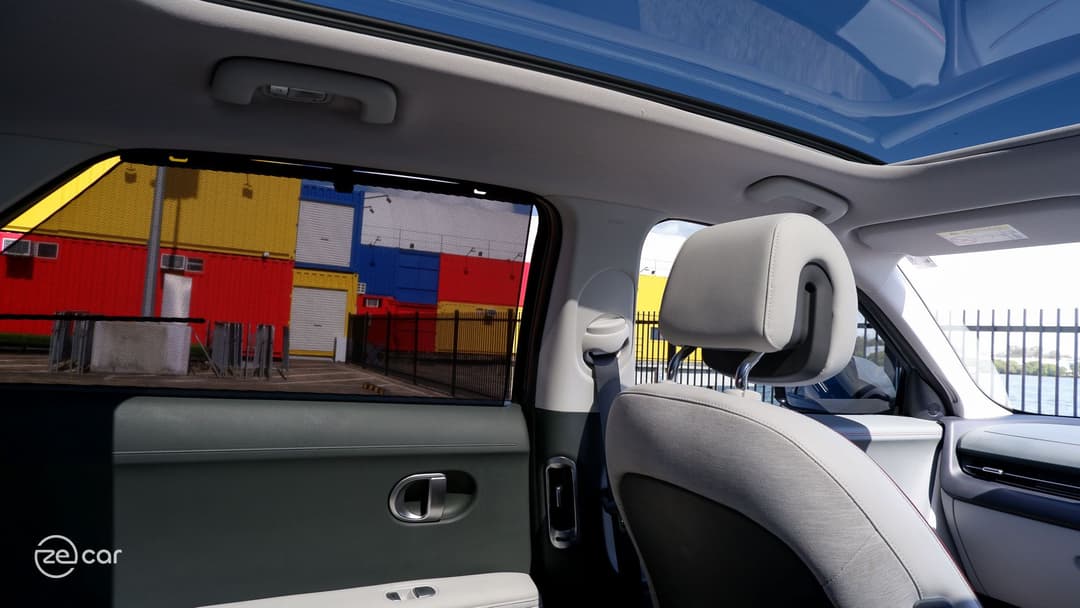
If you can find one on the used market, this 2022 launch model is still worth a look despite missing some equipment over its newer and pricier guises. But, I’d suggest the less powerful two-wheel drive as it’s more efficient, still offers enough power and it’s the only way to get a fully-loaded 2WD today due to the Dynamiq 2WD successors de-speccing some standard features.
We applaud Hyundai for adopting a fixed-price purchasing model for the Ioniq 5 in today’s inflated car market. Yet, the non-traditional sales approach of requiring would-be buyers to try their luck when sales windows drop occasionally online, instead of queuing on a wait list, is a key deterrent.
This Ioniq 5 AWD is a whopping $11,690 cheaper than the equivalent EV6 GT-Line AWD (which we reviewed) when it was sold new.
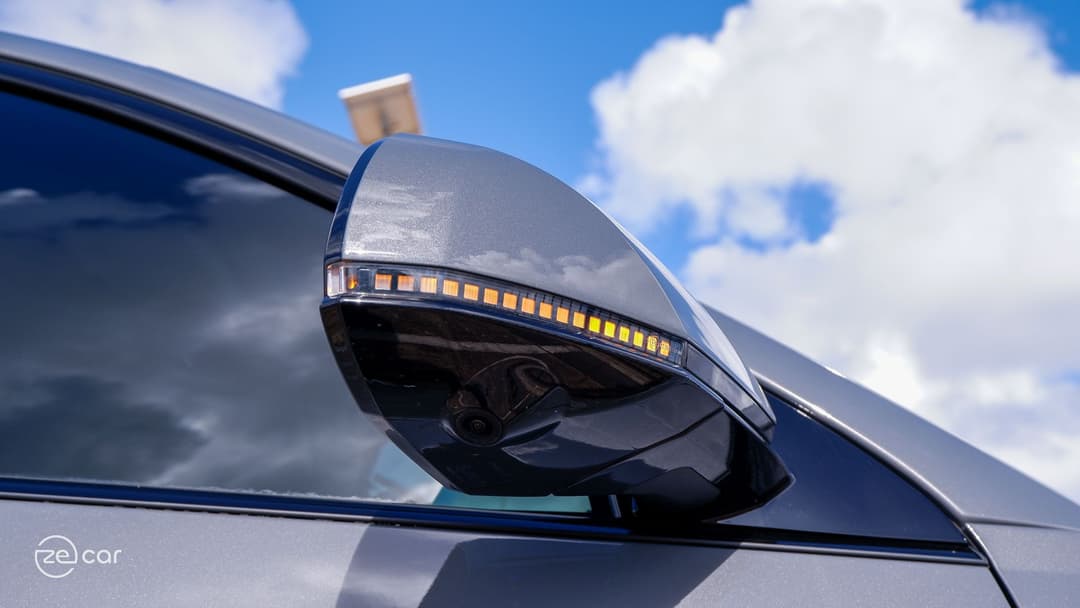

Meanwhile, it faces fierce competition from the popular Tesla Model Y RWD, undercutting it by starting from $72,300 before on-road costs. However, with the American company not selling the Long Range AWD in Australia yet (asking a jump to the almost $100K Performance for AWD), this represents an opportune selling point for the Ioniq 5 AWD.
The top-spec dual-motor Volvo XC40 and C40 Recharge, BMW iX1, and smaller entry-level Mercedes-Benz EQA 250 electric SUVs are similarly priced, too, though are based on combustion engine platforms and offer the luxury badge cachet.

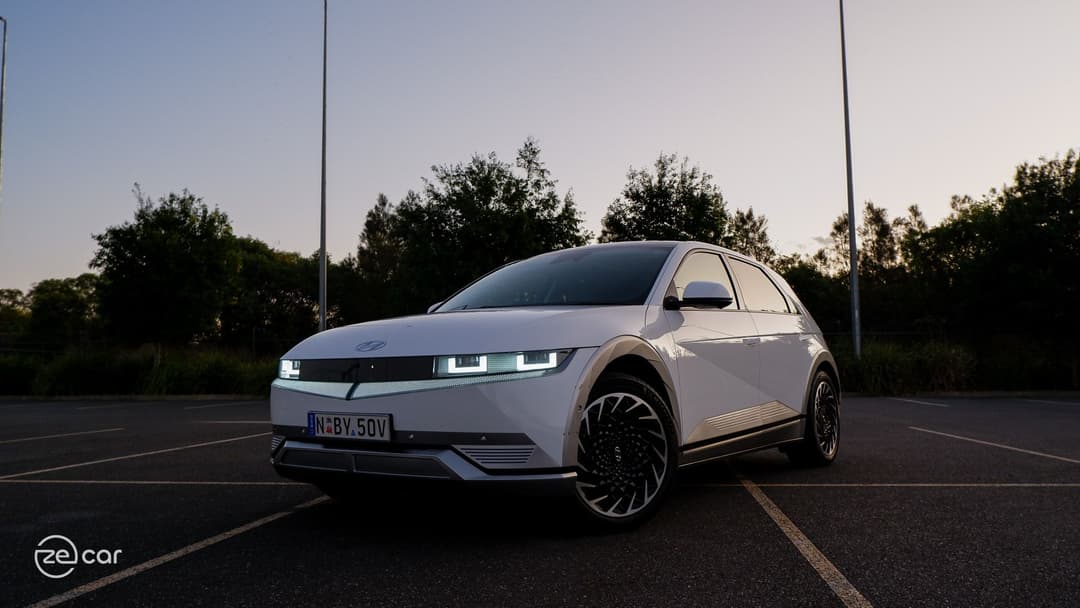
But the fact that many people were fixing their eyes on the Hyundai Ioniq 5, a Tesla Model 3 driver waved while driving in the opposite direction, and even newly-minted Model Y owners were questioning me at the public charger is a sign that the Ioniq 5 has become a recognisable icon of EVs thanks to its retro, futuristic and cute design.
It demonstrates that electric cars can look different, but not like a boring blob, and still offer a futuristic and functional interior.
And the Hyundai Ioniq 5 is just the start of a dedicated South Korean electric car line-up with more to come…
Ioniq 5 FAQs
Datawrappers by Danny Thai
Photographs by Henry Man
About the author
Stay up to date with the latest EV news
- Get the latest news and update
- New EV model releases
- Get money savings-deal




